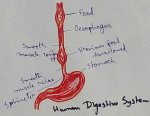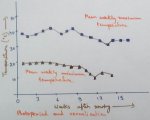Ambedkar Jayanti
Celebrated on April 14 each year, this day celebrates the spirit and memory of the man who is responsible for gifting us the Constitution of our land Babasaheb Bhimrao Ambedkar who was born on this day in the year 1891. Throughout the length and breadth of the country, this day is designated as an official public holiday.
Processions are carried with much aplomb by his followers at Deeksha Bhoomi in Nagpur and Chaitya Bhoomi in Mumbai. The Delhi procession is attended by senior State dignitaries and the President, Prime Minister and the leaders of major political parties who pay homage to the Ambedkar Statue at the Parliament of India in New Delhi.
Dr Ambedkar is a man much revered throughout the country especially by the fellow Dalit community who look up to him and followed his example to embrace Buddhism. A social reformer, a jurist and an economist, this man of varied talents campaigned relentlessly against social injustice against the untouchables and also championed the cause of women and laborers. He was the guiding force behind the Dalit Buddhist movement and is regarded as a Dalit icon in the country.
Amongst one of his famous quotes in the one on women “I measure the progress of a community by the degree of progress which women have achieved. For his long standing contribution in various fields, he was awarded the Bharat Ratna posthumously in the year 1990.
His early life witnessed a lot of trials and sufferings which he experienced on a first hand basis against the Dalits who were treated as untouchables in the Indian community and were ostracised from the popular society. Starting from school, he and the other Dalit fellow students were shunned by the high caste students and made to sit in a separate corner on a gunny sack brought from home and not given adequate attention. Something as basic as drinking water was a humiliation since they were not allowed to touch the water pot and had to subsist on water being poured to them by the school peon from a distance to quench their thirst. ‘No peon, no water ’Ambedkarlater mused in his journals as part of the travails of growing up.
At the age of 15, he was married to the 9 year old Ramabai but his first wife died in 1935 and ultimately he married Dr. SharadaKbair who assumed the name of Savita Ambedkar.
It was on account of his dogged determination that he managed to pursue higher education first at University of Mumbai and subsequently at Columbia and later on at London School of Economics, having earned the distinction of the first Indian to pursue a doctorate in Economics overseas.
This man is not only responsible for being the President of the Constituent Assembly but also laid the foundationof the Reserve Bank of India which serves as India’s Central Banking system.
His contribution to the cause of Dalit movement found manifestation is his book ‘The Buddha and the Dhamma’ which is regarded as the Holy Grail of Navayana and Dalit Buddhists. The manuscript of the book finished just three days prior to his death on December 6th, 1956.
Every year on April 14th, celebrating this day is paying a tribute to this Architect of our Constitution and a founding father of the Republic of India.
From Ambedkar Jayanti to HOME PAGE
Recent Articles
-
Eleventh Grade | Eleventh Grade Science | Eleventh Grade Math
Jun 27, 25 12:26 AM
Eleventh grade biology has been designed in accordance with the recommended topics. We will cover all the topics in biology very exciting and interesting way. -
Explain Digestion of Food | Salivary Glands | Oesophagus | Stomach
Jun 27, 25 12:20 AM
Before the digestion is start by the different enzymes secreted from the different digestive glands food must be turned and chut or mixed with saliva inside the mouth. -
Explain Human Digestive System | Mouth | Tongue | Pharynx | Teeth
Jun 21, 25 01:15 PM
Digestive system is a system of alimentary canal and digestive glands. Alimentary canal- alimentary canal is a tube of variable diameter having muscular wall and glandular epithelial tissues which sta… -
Vernalisation in Plants | Definition | Mechanism | Devernalization |
Jun 18, 25 01:34 PM
Definition of vernalisation- The change of flowering habit due to the low temperature treatment is known as vernalisation. This is a physiological process which was denoted by Clipart in 1857 invite b… -
The Food We Eat | Food we Get from Plants and Animals | Carbohydrates
Jun 15, 25 03:20 PM
What are the food that we should eat? Find out the names of ten food items in the word maze. Write the names in the correct column of the table given below. Food we get from plants Food we get from an…




New! Comments
Have your say about what you just read! Leave me a comment in the box below.